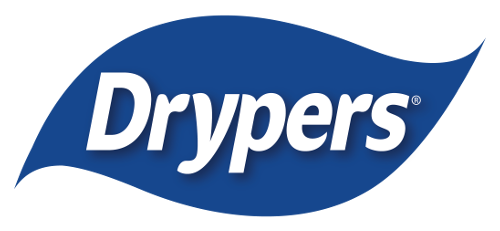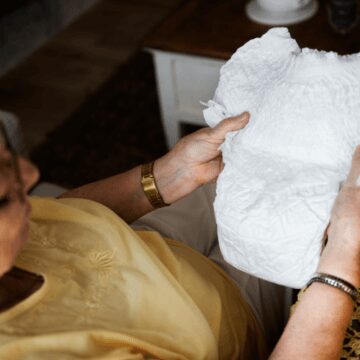
Nappy rash is as annoying to get rid of as it sounds. A painful inflammation that can develop into sores if not treated correctly or in time. Some people and babies are just more prone to developing this rash, no matter the precautions one takes. That’s why we put together a list of South Africa’s most effective and favourite solutions to solve the even nastiest nappy rash.
What is a nappy rash?
Before we get into details on how to resolve, like any medical issues, it’s best to understand where it comes from. Nappy rash is a type of contact dermatitis (rash) that appears on your baby’s bottom as small red, often irritating dots, which are sore and inflamed. More common in babies and infants, but anyone, at any age, who wears a nappy can develop it
Symptoms can include:
- Inflamed skin – the skin around the genital area and anus looks red and moist.
- Blistering – the skin may blister and then peel, leaving raw patches.
- Spreading – the rash can spread onto the tummy and buttocks.
- Ulcers – small ulcers can sometimes form on healthy skin near the area of the rash.
Common Causes Of Nappy Rash
If you have sensitive skin, there are a number of elements that could trigger a nappy rash. However, these are the most common culprits:
- Ammonia –when faeces and urine break down they release ammonia which can irritate the skin.
- Thrush (yeast infection) – thrush can occur spontaneously. It is more common after taking antibiotics for another infection. Thrush can aggravate the nappy rash.
- Irritants – some wipes may cause irritation or allergy. Scented soaps or lotions can also irritate the skin.
- Delaying change – leaving a wet or soiled nappy on for too long can also cause skin irritation.
Prevention & Treatment
When it comes to nappy rash, you want to try to prevent it from happening.
These preventative tips are suitable for both adults and babies and may help ward off the next round of nappy rash.
1. Keep clean
The first and most important tip for nappy rash is to keep the nappy area as clean as possible, by changing the nappy frequently. Wash the area with warm water and cotton wool and pat dry gently.
2. Keep dry
- For Babies – allow the baby to go nappy free sometime during the day, a bit risky, but it is important to allow the skin to breathe.
- For Adults – always make sure that the nappy size is correct and that it isn’t wrapped too tightly. A comfortable fit will allow the skin to breathe.
3. Be gentle
When cleaning, try to be as gentle as possible, too much rubbing can irritate the skin.
4. Apply a barrier cream
Protective barrier creams help keep the skin in good condition, by soothing, moisturising and protecting the skin from irritants.
There are many different types of barrier creams out there, but we have locked this list down to some of the most popular choices for South African moms & caregivers:
- Bennetts
- E45 nappy cream
- Fissan paste
- Bepanthen
- Vaseline
- Sudocrem
- Castor oil
- Seba med
9 Natural Home Remedies for Nappy Rash
If you a naturalist and prefer not to use harsh store-bought products, don’t worry, we got you covered. Most of these home remedy items can be found in your kitchen! Which is great if you need a solution urgently or just looking to save a few bucks. Let’s have a look at their amazing properties;
1. Coconut oil
Coconut oil is antifungal and antibacterial which makes it ideal for treating nappy rash.
2. White vinegar
Mix a teaspoon of white vinegar with a cup of water. Gently wipe the solution over the bottom, when changing. The acidity of the vinegar will balance out with the urine.
3. Breast milk
Breast milk contains antibodies that can fight diseases. Apply a few drops to the rash and allow the milk to dry naturally.
4. Cornstarch (Maizena)
This is great for absorbing moisture. Carefully apply some of the powder to a clean bottom. Put on a clean nappy as normal.
5. Oats (Jungle Oats)
Pour some oats into the leg of an old pair of stockings. Tie a knot and add to their bathwater. This is very soothing for the skin.
6. Chamomile Tea & Honey
Honey is a natural antiseptic. Brew two cups of chamomile tea and mix in one teaspoon of honey. Allow it to cool down and decant into a spray bottle. Simply spray the rash with every nappy change. Remember to wait for the skin to dry each time.
7. Yoghurt
Yoghurt is a great remedy if the nappy rash is triggered by a yeast infection. Apply some plain yoghurt onto the rash. This will soothe and cool the irritated skin.
8. Epsom salts
Mix one tablespoon of Epsom salts into a cup of water. Then gently wipe the solution onto the rash with a cotton ball.
9. Baking soda
Baking soda may help soothe the affected skin and promote faster healing. Just add a few tablespoons to their bathwater.
When to visit a Doctor
Although most nappy rashes are not dangerous, it is important to know the signs of something more serious.
Always call or see your doctor if:
- The rash isnʼt gradually improving after a few days.
- The irritated area is red, very warm and the rash is swollen.
- Bright red irritation all over the nappy area, including in the folds of the skin.
- Seeping yellow patches or pus-filled pimples on or around the nappy area.
- A fever or general irritability or discomfort at change time.
If Nappy Rash Persists, Consider Changing Your Diaper Brand
If you tried all of the above and the rash still persists or keeps reoccurring we suggest you consider trying another brand of nappies to see if it resolves the issue. Drypers South Africa stock a range of premium nappies & pullups for babies and superior quality adults nappies.
Why not give it a try and see if it resolves your nappy rash issues; shop our ranges here: Baby Nappies | Baby Pull-ups | Adult Nappies.
What Is Your Secret Weapon To Fight Nappy Rash?
Did we miss out on anything? Do you have any tips or remedies of your own, for treating a nappy rash, that we might not have covered? We’d love to hear your thoughts, simply comment below or contact us here.
Recommended Articles:
To help you on your journey, we recommend the following articles relating to baby care:
- Top Solutions To Prevent Leaks In Your Baby’s Nappy
- 11 Signs Your Baby Is Ready To Go Up a Nappy Size
- How Often Should I Change My Baby’s Nappy?
- The New Moms Guide to Newborn Navel Care
- How To Stay Pee Free When Changing Your Baby Boy’s Nappy
Sources:
- Image Source: Prostooleh via freepik.com







